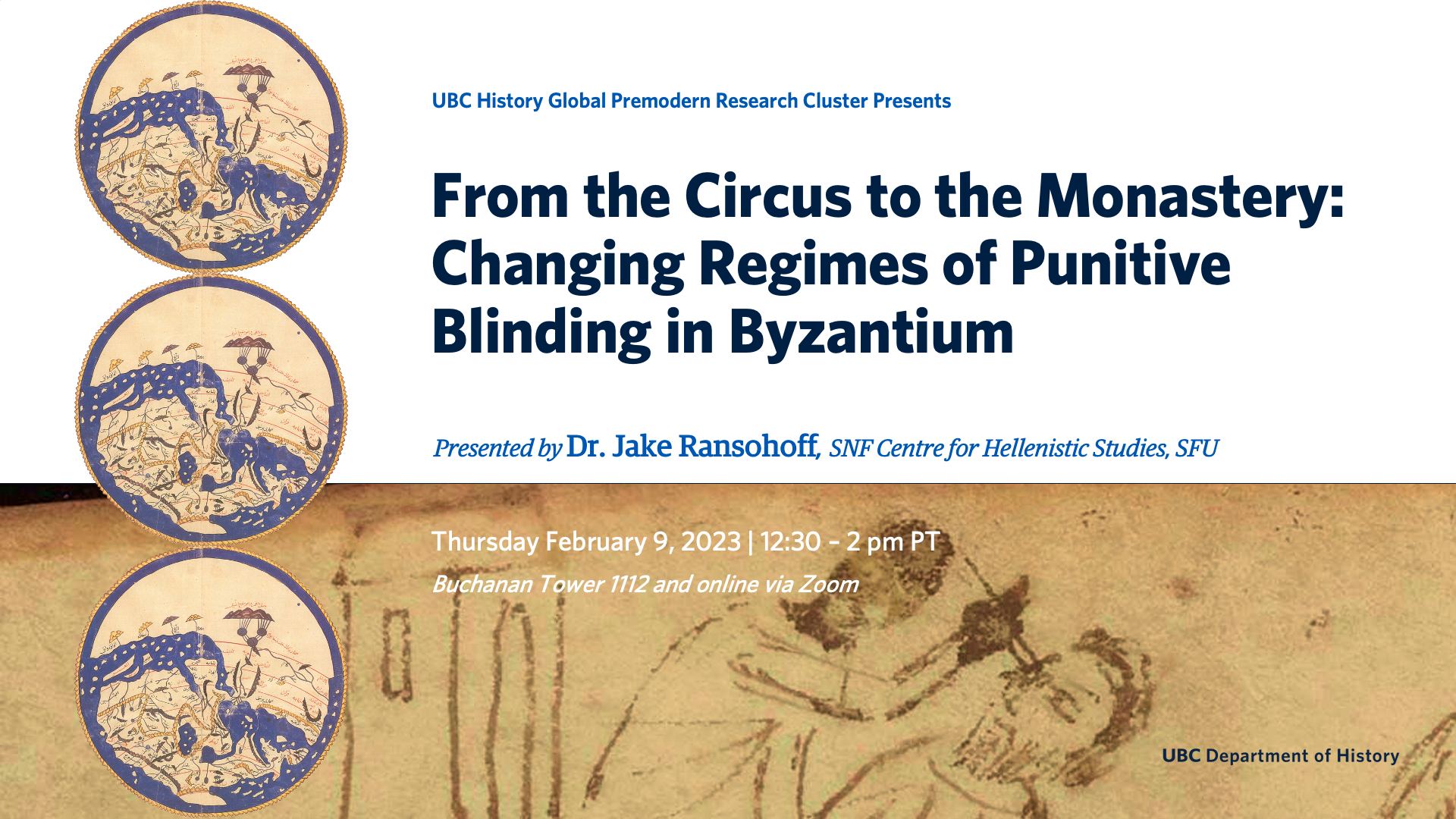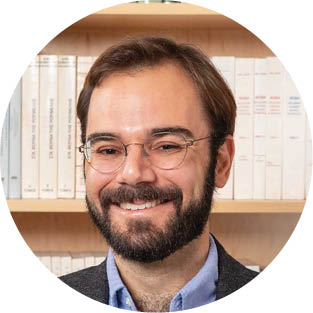

On February 9, 2023, join the UBC History Global Premodern Research Cluster for “From the Circus to the Monastery: Changing Regimes of Punitive Blinding in Byzantium”, a presentation by Dr. Jake Ransohoff (SNF Centre for Hellenistic Studies, SFU).
The Global Premodern Research Cluster was established to bring together a multidisciplinary community with shared and varied interests in global premodern studies. It serves as a forum for faculty, sessional and limited-term instructors, postdoctoral fellows, graduate students, and interested undergraduate students affiliated across department at UBC as well as interested participants beyond UBC. The Global PreModern Research Cluster conceives of ‘premodern’ as global in its geographic breadth and flexibly ranging in its temporal scope from ancient times up to 1800 CE. The group embraces a plurality of perspectives to the past and the evidence used to study the past, including textual, material, oral, and visual sources.
The Cluster is convened by Drs. Sara Ann Knutson, John Christopoulos, and Shoufu Yin. To be added to the mailing list or for other queries, please contact Sara Ann Knutson at sa.knutson@ubc.ca.


Punitive blinding in Byzantium: a twelfth-century Byzantine illumination to the Life of Barlaam and Joasaph (King’s College, Cambridge, MS 45, 97v
Talk Abstract
Blinding is among the hardiest perennials in the field of Byzantine punitive practices. Often described as a “uniquely Byzantine” form of punishment, it served as the standard penalty for imperial rivals and defeated rebels in Byzantium for over six centuries. Yet blinding’s longevity has obscured some important changes in the methods, frequency, and venues of this gruesome practice. The present paper will focus on one such change in particular. It argues that a significant but unnoticed shift occurs in venues of corporal punishment at the end of Late Antiquity. Up to the eighth century, the disfigurement of imperial rivals played out in large public arenas such as the Hippodrome, surrounded by elaborate spectacles of humiliation. After this point, however, mutilation largely moved out of the arena and into prisons or monasteries, hidden away from public view. This paper maintains that changes in venues of punishment correlate with changes in regimes of punishment: the rising frequency of blinding vis-à-vis other forms of mutilation (such as nose- and hand-amputation) emerges in tandem with the shift of mutilation from open to closed space. These intertwined developments—so this paper hopes to show—raise important questions about relationship between punishment and imperial power across the transition from Late Antiquity to medieval Byzantium.
About the Presenter


Jake Ransohoff
Jake Ransohoff is currently the Hellenisms Past and Present, Local and Global Postdoctoral Fellow at the Stavros Niarchos Foundation Centre for Hellenic Studies at Simon Fraser University. He received his PhD in History from Harvard University in November 2022. His research focuses on disability, social exclusion, and attitudes toward the body in Byzantium and the medieval Mediterranean. His wider interests include Late Roman and Byzantine urban archaeology, plague in the Byzantine world, and the study of Byzantium by early modern humanists. His co-edited volume, The Invention of Byzantium in Early Modern Europe, was published in 2021 with Dumbarton Oaks Press.
